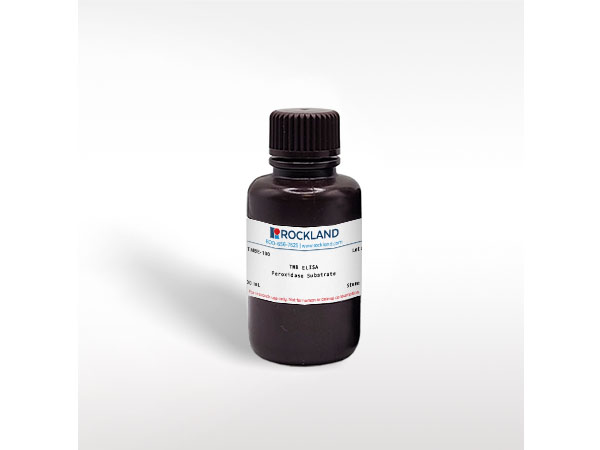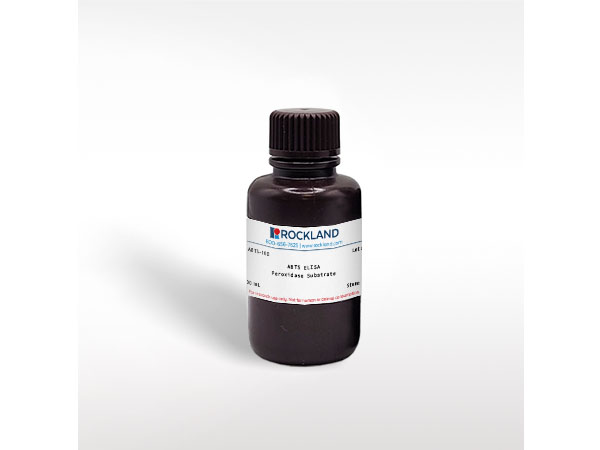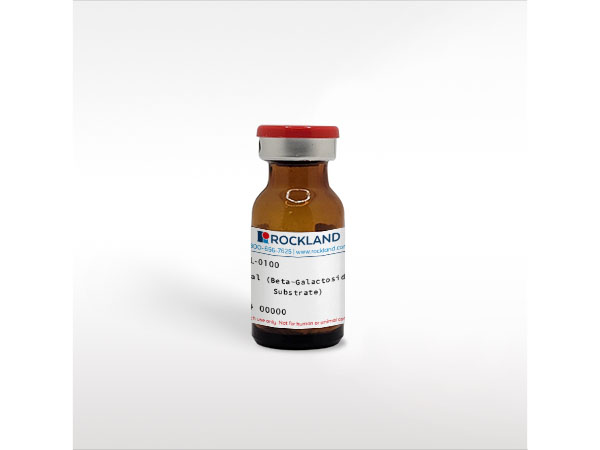Immunological assays and reporter assays are indispensable tools in molecular biology, diagnostics, and research, facilitating the detection, quantification, and analysis of biomolecules. These assays, ranging from Immunohistochemistry (IHC), Western blotting (WB), and Enzyme-Linked Immunosorbent Assay (ELISA) to genetic reporter assays like blue-white screening, leverage the specificity of antibody-antigen interactions and the sensitivity of reporter gene expression.
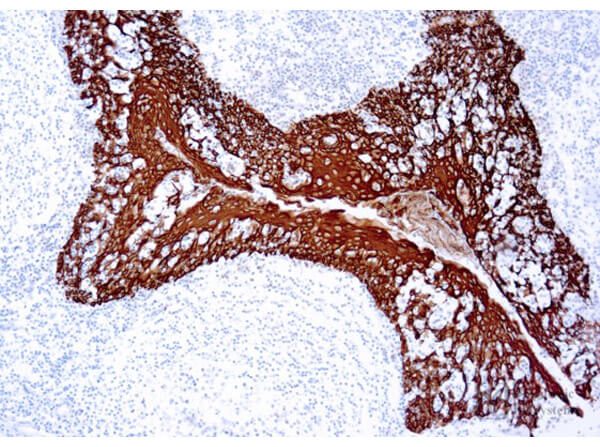
Substrates used in these assays are compounds that undergo a chemical reaction catalyzed by a reporter enzyme or enzyme label, resulting in a measurable signal. This signal can be colorimetric, chromogenic (See IHC image left), or luminescent, each offering unique advantages for specific applications. The choice of substrate directly affects the assay's sensitivity, dynamic range, and overall reliability.
To aid in selecting the ideal substrate for your assays, we have created the following guide, ensuring you choose the most effective substrate for optimal results. At Rockland, we understand the pivotal role substrates play in the success of assays. That's why all substrates sold by us are also rigorously used in-house for our research and development projects.
Assay Substrate Selection Guide
| Product | Recommended Use | Type | Application Note |
| ABTS ELISA Peroxidase Substrate | ELISA | Colorimetric | ABTS is suitable for peroxidase (HRP) labels, producing a green color upon oxidation that is measurable at 405-410 nm. ABTS is preferred for applications requiring a soluble end product and is compatible with both plate readers and spectrophotometers. |
| BCIP/NBT Membrane Alkaline Phosphatase Substrate | WB, IHC | Chromogenic | BCIP/NBT is utilized in combination as a substrate for alkaline phosphatase (AP) in various applications, including WB and IHC. The reaction produces an insoluble dark purple/blue precipitate. This substrate is particularly useful for chromogenic detection in blotting and in situ hybridization assays due to its high sensitivity and resolution. |
| BCIP/TNBT Membrane Alkaline Phosphatase Substrate | WB, IHC | Chromogenic | Proprietary buffer with enhancer. BCIP/NBT is utilized in combination as a substrate for alkaline phosphatase (AP) in various applications, including WB and IHC. The reaction produces an insoluble dark purple/blue precipitate. This substrate is particularly useful for chromogenic detection in blotting and in situ hybridization assays due to its high sensitivity and resolution. |
| Chemiluminescent FemtoMax™ Super Sensitive HRP Substrate | WB, ELISA | Luminescent | 2 component ECL (Enhanced Chemiluminescence) system. Involves the enzymatic oxidation of luminol, a process that is catalyzed by peroxidase (HRP). In the presence of HRP and a peroxide, luminol is oxidized, and emits light. The intensity of the emitted light is proportional to the amount of HRP-bound target, allowing for the quantitative detection of proteins. |
| DAB Membrane Peroxidase Substrate (50X) | WB, IHC | Chromogenic | 50X concentrated solution. DAB is extensively used in IHC as a substrate for peroxidase (HRP), resulting in a brown-colored precipitate at the site of enzyme activity. It is favored for its high-resolution staining and compatibility with light microscopy, allowing for the detailed visualization of antigen-antibody interactions in tissue sections. DAB can also be used in WB for detecting HRP-conjugated secondary antibodies. |
| NPP (1X) ELISA Alkaline Phosphatase Substrate | ELISA | Colorimetric | NPP is a substrate for alkaline phosphatase (AP) in ELISA, producing a yellow product that is measurable at 405 nm. It is chosen for its suitability in applications requiring a quantitative readout of enzyme activity. |
| NPP (50X) ELISA Alkaline Phosphatase Substrate | ELISA | Colorimetric | 50X concentrated solution. NPP is a substrate for alkaline phosphatase (AP) in ELISA, producing a yellow product that is measurable at 405 nm. It is chosen for its suitability in applications requiring a quantitative readout of enzyme activity. |
| Stable DAB/Plus | IHC | Chromogenic | DAB is extensively used in IHC as a substrate for peroxidase (HRP), resulting in a brown-colored precipitate at the site of enzyme activity. It is favored for its high-resolution staining and compatibility with light microscopy. |
| TMB ELISA Peroxidase Substrate | ELISA | Colorimetric | TMB is a substrate for peroxidase (HRP)-based immunoassays, notably ELISAs, and is known for producing a blue color that changes to yellow upon stopping the reaction with sulfuric acid. The color change is quantifiable at 450 nm. TMB's high sensitivity makes it ideal for detecting low concentrations of analytes. |
| TMB Membrane Peroxidase Substrate - Ready-To-Use | WB, IHC | Chromogenic | This TMB is a substrate for peroxidase (HRP)-based immunoassays producing a blue-green chromogenic color on membrane or surface of sample material. |
| TMB Prestained Red ELISA Peroxidase Substrate | ELISA | Colorimetric | This proprietary formulation is red in color, enabling users to have visual certainty that the product was applied equally. TMB is a substrate for peroxidase (HRP)-based immunoassays, notably ELISAs, and is known for producing a blue color that changes to yellow upon stopping the reaction with sulfuric acid. The color change is quantifiable at 370 nm or 655 nm. |
| UniGlow™ - One Component Chemiluminescent Substrate | WB, ELISA | Luminescent | One component ECL system. Involves the enzymatic oxidation of luminol, a process that is catalyzed by peroxidase (HRP). In the presence of HRP and a peroxide, luminol is oxidized, and emits light. The intensity of the emitted light is proportional to the amount of HRP-bound target, allowing for the quantitative detection of proteins. |
| X-Gal (Beta-Galactosidase Substrate) | Blue-white screening, IHC | Chromogenic | X-Gal is a substrate for β-galactosidase, commonly used in molecular biology for blue-white screening of recombinant bacterial colonies and other reporter assays. When hydrolyzed by β-galactosidase, X-Gal produces an insoluble blue precipitate. |
Featured Products
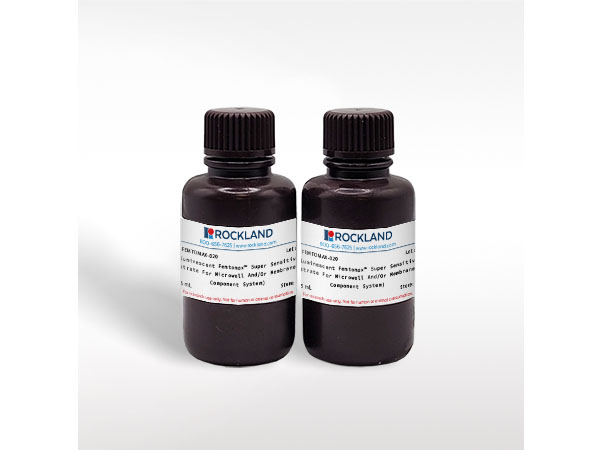
Assay Substrate FAQ
-
How do I choose the right substrate for my assay?
The choice depends on the assay type, sensitivity requirements, detection method (colorimetric, chemiluminescent, etc.), and the enzyme involved. Consider factors like detection limits, assay format, and equipment availability. -
What is the difference between luminescent, colorimetric, and chromogenic substrates?
- Luminescent: Produce light upon reaction with an enzyme, offering high sensitivity for detecting low analyte levels. Often used in WB with peroxidase labels.
- Colorimetric: Cause a visible color change measurable by absorbance, useful for straightforward, quantifiable assays. Often used in ELISA.
- Chromogenic: Also result in a color change but form a precipitate for visual localization of enzyme activity, ideal for tissue staining in IHC and with AP-labels in WB.
-
Why use ECL substrates in Western blotting?
ECL substrates provide high sensitivity and a wide dynamic range, making it ideal for detecting low-abundance proteins in Western blot assays. -
Can one-component ECL substrates be as sensitive as two-component systems?
One-component ECL substrates are formulated to match the sensitivity and stability of two-component systems. It is still important to validate the one-component system for your specific application.
